Text


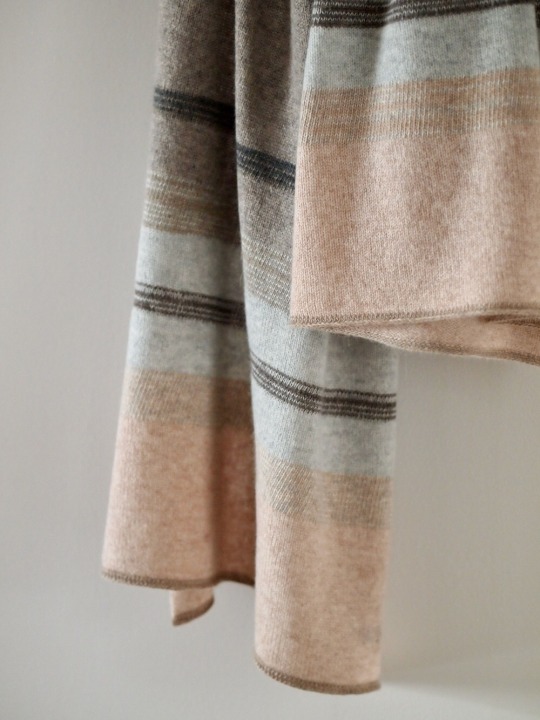
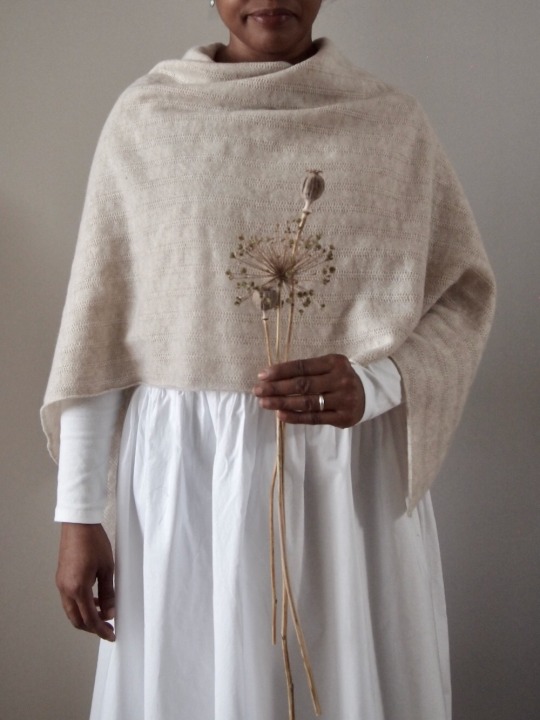



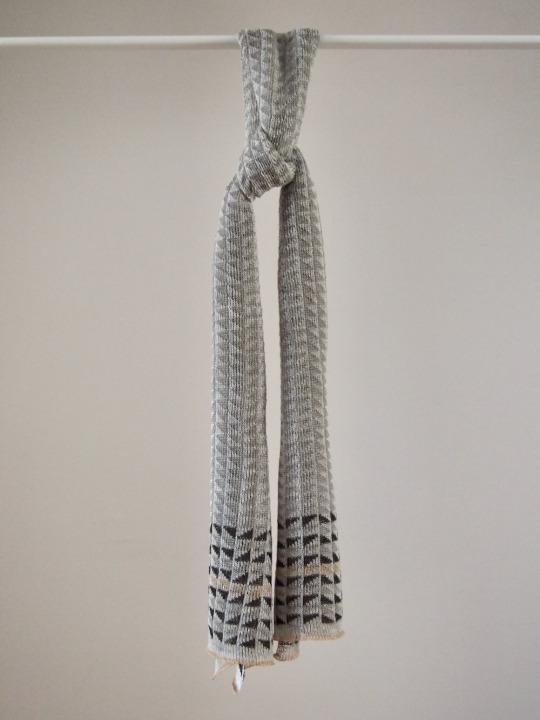

CREATIVE CONVERSATIONS:
Who are you: Jules Hogan
What is your work: Design knitted garments and accessories
What is your:
Website: www.juleshogan.com
Twitter: juleshoganknit
Instagram: @juleshoganknitwear
Facebook: juleshoganknitwear
Describe your work in 5 words: Natural, simple, slow, crafted, timeless.
Can you tell us a little about your what you do? I’m a knitwear designer maker based in Berkshire, UK. My designs are inspired by the everyday, botanicals and patchwork crafts. The basis for the collection is simple shapes, natural materials and muted colours, designed to flatter and enhance the body and suitable for men and women. Time is spent selecting the perfect shades to flatter different skin tones. Many of the designs are knitted by myself, but helped by master knitters in Scotland, and have recently started working with a family-owned factory in Nottingham.
Can you tell us about your career journey and how you got to where you are today? I graduated in 1995 and the collection won the Graduate Fashion Week Knitwear Award, and the Winchester School of Art Colour award. Whilst studying at Winchester, I developed a love of colour and dyeing techniques. My first job was as a colourist for a design consultancy in London, where I produced colour samples for designers and high street stores, including Donna Karan, Calvin Klein and Sir Terence Conran. I’ve always been multi-faceted, so spent time producing print designs and embroideries during this time, and continued this once I had moved on, working freelance for a design studio. For my next appointment, I worked with Gary Rooney and we designed and produced knitted ideas for fashion houses and retail outlets. These designs were sold in Europe and the USA. A highlight was working with WGSN, a trend agency, because we were able to create inspirational textiles without restraint.
Where is your office/studio, and what is the view out of your window? My studio is at the end of the garden positioned under an old Oak tree. Looking out of the window, I can see a bird feeder (I love watching the Robins and Finches), my tiered vegetable patch, garden and the house.
What is the first thing you do when you get to work? The first thing I do is open the blind to let in natural light and turn on the radio, usually Radio 4, as I enjoy the hum of voices as I work and its always an education!
What are the tools of your trade? A knitting machine, yarn, machine tools, several pairs of scissors and snips, and a notebook, which I carry everywhere for those inspiring moments.
What can’t you work without? I’m very resourceful and can work with very little, but I can’t live without being able to create, having access to the outdoors and those moments of calm and relaxation.
Why do you love what you do? I love that being my own boss has given me freedom and I can work at my own pace. Since becoming self-employed, I have increased my social circle, meeting up with like-minded creatives and designing intuitively.
Who or what inspires you? The beauty of the everyday inspires me the most. It can be simple items we have in our homes, the hedgerows on my daily dog walks, lichen on a rooftop and even a tiny flower growing in the crack of a pavement.
What is the best advice you have received? The best advice I received was by a gentleman I met very early on in my career, David Shah, who said, “It’s important as a creative to be your own boss”. It took over 20 years, but I’m pleased to be at this stage now.
One moment in your career you will always remember? The moment I remember the most was getting the results for my degree. It was an emotional time with family illness, wanting to be at home, but knowing it was important to put in the work and finish the course. I was thrilled to receive a first class BA…you can imagine the relief and I broke down in tears.
What is the worst part of your job? The isolation of day-to-day working from home, but social media has helped an awful lot and being part of a network of creatives.
What’s your proudest career achievement? Seeing my textile designs on the catwalk and in shops, but also where I am now, running a creative business.
What are you working on at the moment? The right decision for all, but like many, it was very unsettling being in lockdown as plans were altered, shows cancelled and everything stopped. Once I had adjusted to our new way of life, I decided to use the time wisely and allowed myself to experiment (creative play), and try ideas that had been in my thoughts for a while. This has included working with woven fabrics, patchwork and darning. I’m really pleased with the results so far, and the designs are having a favourable response. Things have gone full circle and after a break I’m getting the dye pots out again, and introducing some botanical dyeing into the collection.
Can you share some favourite websites or instagram feeds?
Some of my favourites are:
@niki.at.the.cottage - One of the first people I followed on Instagram, a seasonal journal, gardening, books, and recipes.
@kathryn_davey - Natural dye textile study and tutor. I took part in one of Kathryn’s workshops last year and its helped me to fall in love with extracting dye from plant material.
@nakedclayceramics - Gorgeous ceramics in earthy tones. Beautiful glazes and subtle details.
@lobsterandswan - account for Jeska Hearne photographer. Jeska’s images have a narrative and you feel part of them. I am honoured to have bespoke items stocked in the online store (@thefuturekept) she shares with her partner Dean.
What advice would you give to someone wanting to do what you are doing? Learn as much as possible and continue learning - it keeps things fresh and exciting!
Do you have a secret ambition still to achieve? I hope to introduce some woven garments to sit with the knitted pieces.
What is your personal motto? ‘Nothing happens before its time’, is something my Mum always says. It’s important to have patience and if its meant to be, it will happen.
If you had an extra hour each day what would you do with it? If I had an extra hour I would like to think I would rest, but in reality know I would fill the time ‘doing’!
How would you like to be remembered? A maker of pieces that bring joy…thoughtful, honest and caring.
Thank you Jules for talking to The Lifestyle Editor.
10 notes
·
View notes
Photo
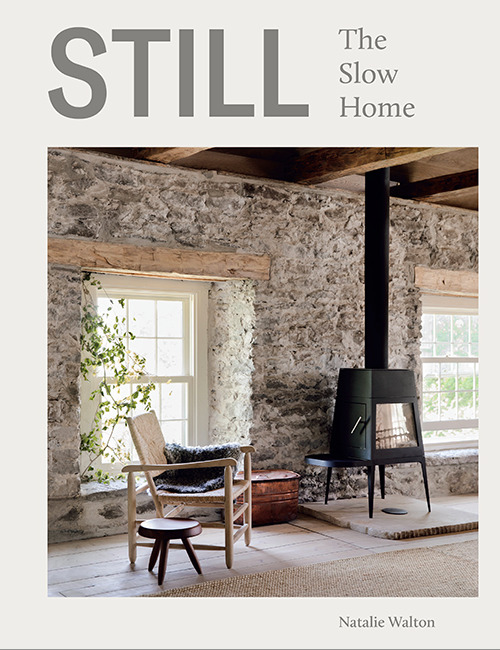
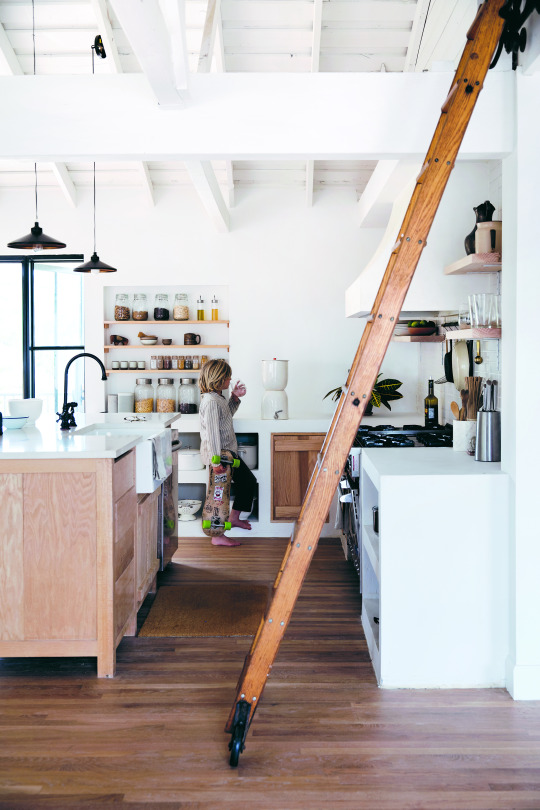
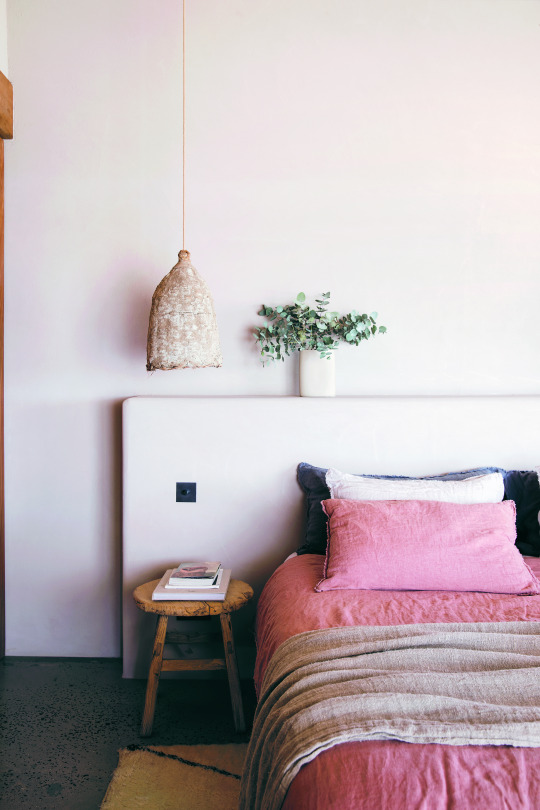
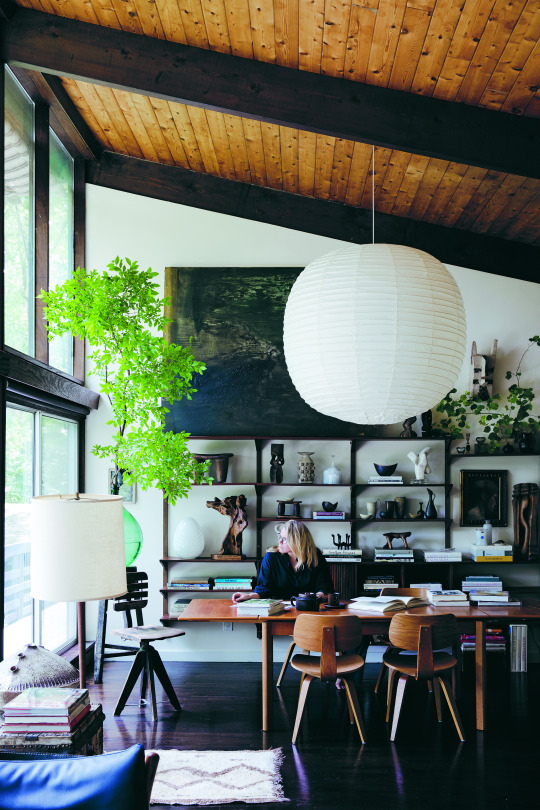
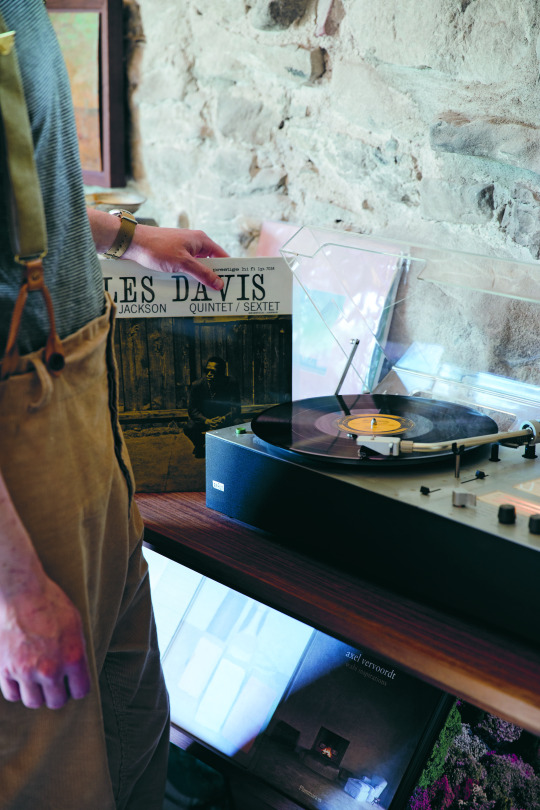
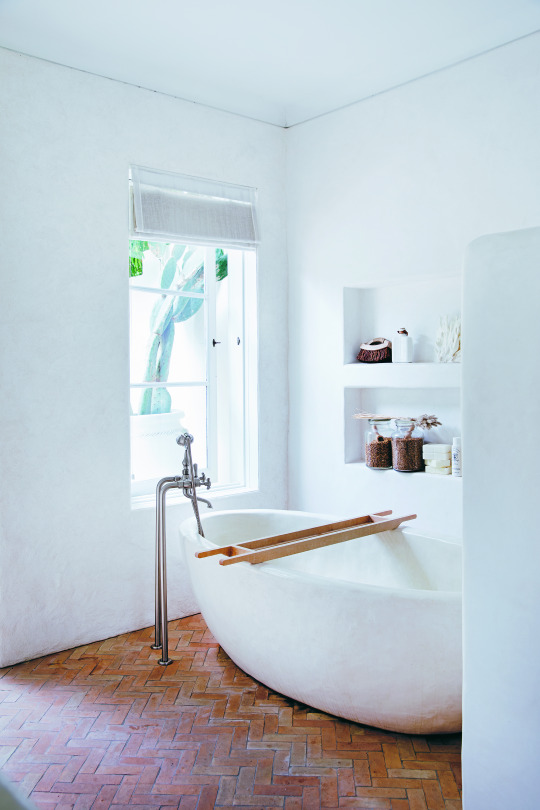

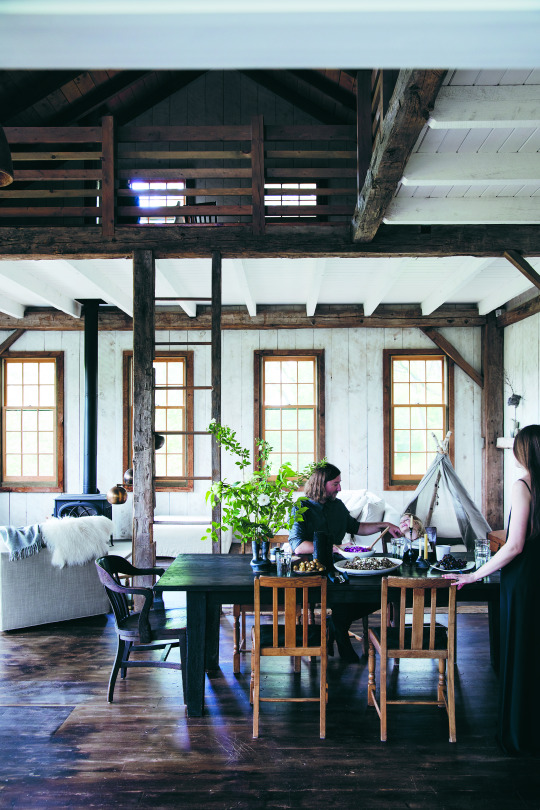

Sometimes a book is published and you simply cannot wait to get your hands on it. Stylist, shopkeeper (@imprint_house) and interiors writer, Natalie Walton’s latest book is one such publication. STILL: The Slow Home is a stylishly, crafted collection of 20 homes from around the world, whose owners advocate slow living. Natalie travelled the globe far and wide to seek out soulful and harmonious interiors that epitomise this concept, and which were beautifully captured by photographer Chris Warnes. The term ‘slow’ is an acronym for how to approach everyday choices in a more considered way: Sustainable, Local, Organic and Whole. It originated in Italy during the 1980s/90s with the slow food movement, which emphasized more traditional food production processes as a reaction to fast food emerged. Taking this ethos into the world of interiors, the book is divided into three chapters; Change, Now and Slow, and cleverly marries cool, calm and covetable interiors, with thought-provoking conversations with home owners. Now, more than ever, the need for change is critical, and this book guarantees to make us all reappraise our own way of living, both in our own homes and the world around us.
I recently caught up with Natalie to discuss her thoughts behind her new publication...
Can you tell us about your new book? About five years ago my family embarked on a tree-change journey, after living in inner-city Sydney. It gave me a whole new appreciation for nature, and the fragility of eco-systems. At the same time it felt as if consumerism was getting out of control. And, as with most things in our life, I believe that often the easiest and best ways to make change is within our own homes.
What criteria were you looking for in the 20 homes you sourced? I was interested in the stories of people who were looking to embrace a slower and more sustainable way of living. What I’ve learned is that there isn’t one way to do this, but many - and it’s a journey. It’s not about buying into a philosophy, but changing the way we think about how we live.
Which was your favourite home you featured and why? Every time I visited one of the homes I could imagine myself living there, and started to mentally plot how I could relocate my family. It’s really hard to choose a favourite, but the one in Mallorca held great appeal - I love stone houses.
Where do you live and what is your own home like? I live in the hinterland of the Byron Bay area on the East coast of Australia. We are so grateful to live here, because I’ve learned that a home isn’t just the building that you live in, but the community that you’re part of too.
Why do you think it's important to live a sustainable, local and organic lifestyle? It’s imperative. We simply cannot continue living the way we are. I think it’s not only important for the planet, and future generations, but also for our own well-being. Ultimately, I believe we enhance our lives when we focus on what’s most meaningful.
What advice would you give someone trying to embrace these changes with their own interiors? The most important step is the first one. Just start doing something. It’s so easy to get overwhelmed or feel that your choices have to be perfect. As I say in the book, instead of having hundreds of people living these ideas out perfectly, we need millions living them out imperfectly.
STILL: The Slow Home by Natalie Walton (Hardie Grant, £30), photography by Chris Warnes, available to purchase here.
BOOK GIVEAWAY: With thanks to publishers Hardie Grant, I have a copy to giveaway over on Instagram. Head over to take part, and good luck!
10 notes
·
View notes
Photo









CREATIVE CONVERSATIONS:
Who are you: Jason Mosseri
What is your work: Chairmaker
What is your:
Website: www.hopespringschairs.com
Instagram: @hopespringschairs
Facebook: hopespringschairmaking
Describe your work in 5 words: Stylish modern Windsor chairs.
Can you tell us a little about your what you do? I hand-make Windsor chairs using traditional tools and techniques. Whilst working within a tradition, I try to create chairs that are contemporary and sculptural. I use a lot of hand tools and do all my wood-turning on a pole-lathe - I am technically a green woodworker. I sell chairs direct to the public by exhibiting at shows and through my website. I also teach chairmaking without the use of electricity in the Summer months. These courses are held at a woodland workshop just North of Brighton. I hope to encourage people to disengage from the hectic modern world and to develop their innate ability to make things, and to learn about the British tradition of chairmaking.
Can you tell us about your career journey and how you got to where you are today? I left Brighton Art College in 1991, and travelled in India over the next four years. During that time, I did a lot of paintings and became involved in the ‘Trance’ music/rave scene. I worked with other artists in a co-op called Z.A.G, decorating clubs in the UK and Europe. From 1997-2017 I worked in Brighton as a tattooist, and in 2004 opened a shop in Brighton with Alex Binnie, ‘Into You Brighton’, now known as 1770 Tattoo. I started making chairs as an interest in 2012, and began working full time at the start of 2018.
Where is your office/studio, and what is the view out of your window? My studio is in the leafy depths of my garden, with views out onto my outdoor work space.
What is the first thing you do when you get to work? Put on the radio and tidy up, then have a cuppa.
What are the tools of your trade? Axes, adzes, scorps, travishers, hand planes, pole lathe, shave horse and draw knife, brace and bit…to name but a few!
What can’t you work without? A pencil.
Why do you love what you do? I love making things���always have done. I get lost in the processes.
Who or what inspires you? At the moment I’m very inspired by English 17th century carving, and the more primitive early Windsor chairs.
What is the best advice you have received? Try not to rush and sharpen tools before you use them.
One moment in your career you will always remember? My visit to Curtis Buchanan in Tennessee where I spent a week with him learning about chairmaking.
What is the best part of your job? I get a lot of satisfaction from seeing students with their finished chairs, after a challenging week in the woods with me.
And the worst? It’s always terrible when you make a mistake whilst making something, particularly if it means starting over again!
What’s your proudest career achievement? Well, I made a chair for my Father, and it made him cry!
What are you working on at the moment? A pair of high-back ‘Scallop’ armchairs for a customer in Scotland.
What single thing would improve the quality of your life? Totally restored eyesight, 50/50!
Can you share a favourite websites or Instagram feed? I love @peterfollansbee at the moment, the man’s a genius. Also, @aspen_golann is a very talented woman.
What have you learned the hard way? Start a project with good raw material as it helps every process along the way.
If you could do another job what would you like to do and why? Something useful/helpful but not sure what!
What advice would you give to someone wanting to do what you are doing? Be prepared to work very hard for your money!
If you could be someone for a day who would it be? An ‘uncontacted’ tribesman/woman in deepest Amazon. Astronaut. Deepsea diver…anything very different!
Do you have a secret ambition still to achieve? I would love to build my own house…and lucid dreaming.
What is your personal motto? Variety is the spice of life.
If you had an extra hour each day what would you do with it? I expect I’d just work more, although I’d love to play my button accordion more.
How would you like to be remembered? Fun. Dependable. Interested.
Photography credits: image 1 Alun Callender | images 2 & 4 James Winspear | images 5, 6 and 7 by Jonathan Bassett
Thank you Jason for talking to The Lifestyle Editor.
3 notes
·
View notes
Photo










When it comes to deciding what to eat and cook every day, incorporating more vegetables into our daily diet is beneficial to our health and the environment. Here to inspire us, and hot off the press, is Eat More Veg, the latest book from food writer and stylist, Annie Rigg. Published by National Trust Books, Eat More Veg is packed full of delicious, nutritious and inspiring dishes, divided into six chapters, including main courses, quick suppers, soups, salads, side dishes, and special feasts...where you will want to pull out the stops. Whether you grow-your-own produce on an allotment, have a weekly delivery box, or shop at your local store or farm shop, this cookbook is essential if you want to make vegetables a bigger part of your diet...without having to compromise on taste.
With over 20 years experience and a Leith’s trained chef, Annie spent eight years working in all manner of kitchens from restaurants and high-end caterers, to cooking for rock-and-roll royalty and travelling the world. She has also worked on numerous books and her writing has appeared in leading food & lifestyle magazines. Annie has now turned her talents to crafting 80 irresistible vegetarian and vegan dishes in her latest offering, and elevating vegetables to be the hero of every mealtime, often using vegetables grown in National Trust gardens. Her recipes are not about what’s missing – they are about maximising the impact and flavour of plant-based ingredients in ways that are fresh and enticing. From puttanesca cherry tomatoes to Indian spiced Romanesco, courgette, pea and basil risotto to spinach, lentil and chickpea kofta, Annie makes use of diverse seasonal vegetables in imaginative, appetising ways. Eat More Veg is a glorious collection of comforting and exciting dishes guaranteed to satisfy.
Eat More Veg, by Annie Rigg, photography by Nassima Rothacker, published by National Trust Books and available to order online here.
BOOK GIVEAWAY: Head over to Instagram to enter a giveaway to win a copy of Eat More Veg. Good Luck!
30 notes
·
View notes
Photo







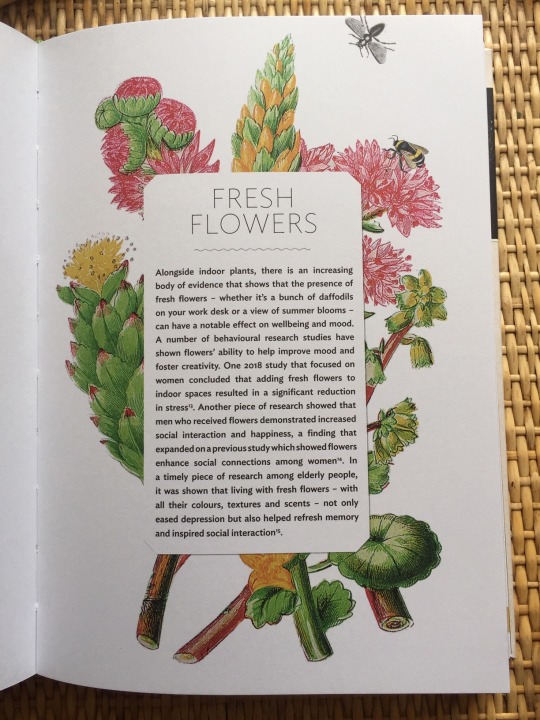


Best-selling author and designer, Sally Coulthard, has released her latest, and rather timely new book, Biophilia, published by Kyle Books. Focusing on ways to transform our living and working areas into spaces that put us more in tune with nature, with long-term benefits for both our minds and bodies.
Never before has the need been greater for being more connected with the natural world, as more and more of us spend longer periods in our own homes. Divided into eight chapters covering key elements for the ‘biophilic home’, including materials, views, colour and natural light, the book explores the links between home, health and happiness.
Drawing on environmental research and neuroscience, Sally makes practical suggestions for bringing the natural world into our homes, positively impacting cognitive function, psychological health and general well-being. I recently caught up with Sally to discuss her thoughts and ideas behind her book, which is available to buy online here.
Can you tell us about your new book? It’s essentially a plea for people to reconnect with nature, especially in their homes and work-spaces. I think especially now, we’re realising just how important that connection is.
What first interested you in the idea of the natural world and Biophilia? It’s been something I have felt all my life, but only recently discovered more about the science and psychology behind it. I’ve lived in both cities and the countryside, and have always felt hugely drawn to nature and natural spaces. I think it’s a part of all of us - it just took me a while to realise that green spaces, fresh air, peace and quiet, running water, nature’s soundtrack, natural colours and hues, natural materials and so on, are absolutely core to human happiness and well-being (or at least mine).
Why do you feel nature is important in our homes? We spend most of our time indoors. It’s not reasonable or practical to expect people to transform their lives so they spend the majority of time out in nature, so we must bring nature to us. Whether that’s in the form of plants, natural light, daily rhythms, the ways buildings respond to our needs, how we can maximise views and outdoor living spaces etc - we have to make our homes match our innate instincts and preferences.
What would be your three top tips that are simple to do to bring nature inside. If you can only do three things, I would suggest - maximise natural light, bring plants indoors, and use as many natural, simple materials in your home as possible (wool, wood, cotton, stone etc).
It feels now, more than ever, we are realising how important being in-tune with nature is...why do you think that is? The answer to that is the massive, endemic problems we have with poor health, polluted air, mental well-being, noise pollution, poor sleep, too much technology, and so on. No wonder we’re all so stressed out. We already instinctively know the answer - that’s why so many of us head to the countryside, woodlands or seaside for relaxation and time out - we know it makes us feel good.
What are some of the health benefits for us, be they physical or mental? They are too numerous to list, and they’re interconnected, but one of the main areas is stress reduction, which in itself has a knock-on effect on heart disease, immune response, mental health, cortisol levels and so on. I love the fact that Florence Nightingale knew about biophilia, or at least, the health benefits of nature, centuries ago. Here was a woman who knew the potency of plants and flowers on medical wards to improve the well-being of her patients, decades before scientific research validated her instincts. There are some really fascinating pieces of research going on as we speak - one study, for example, recently discovered that forests release certain chemicals into the air that actively improve our immune responses. No wonder forest bathing has become so popular. Or another piece of research, that showed how beneficial outdoor play is to children of all ages - out in nature, children learn to manage risk, have less anxiety and play less gendered games. Amazing, really.
Have you changed the way you live and work after researching about biophilia? Absolutely. All the things that I knew made me feel better - like getting outside, working in a space with lots of natural light, having plants in the home, using natural materials, having real fires, getting proper levels of sleep, enjoying breezes and fresh air and so on - they’ve become even more important. If I’m feeling out of sorts, I now know what I have to tweak or change to feel better.
10 notes
·
View notes
Photo
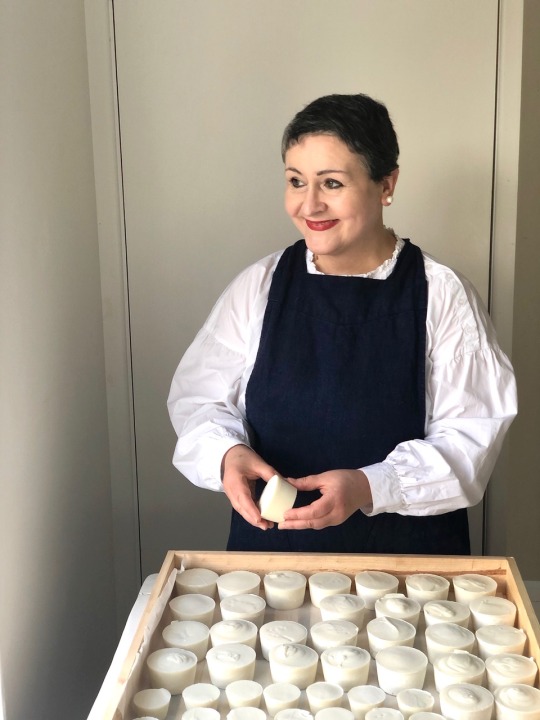

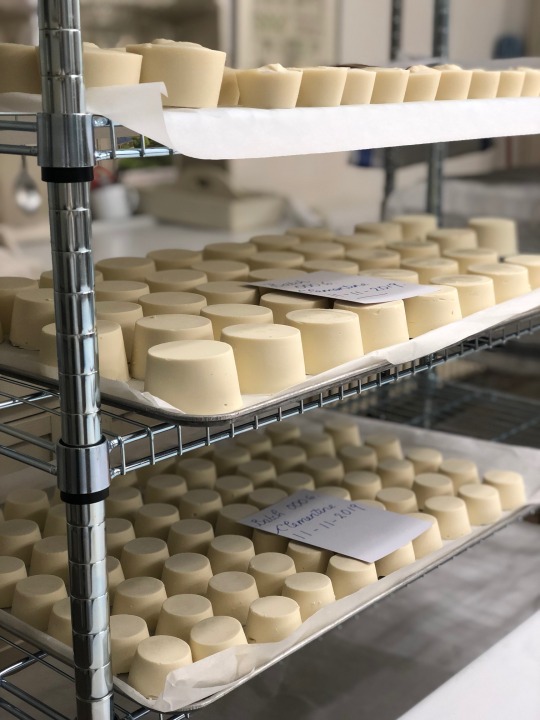

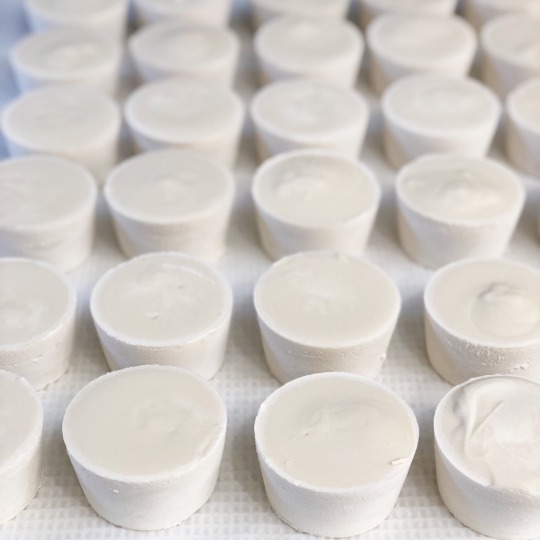

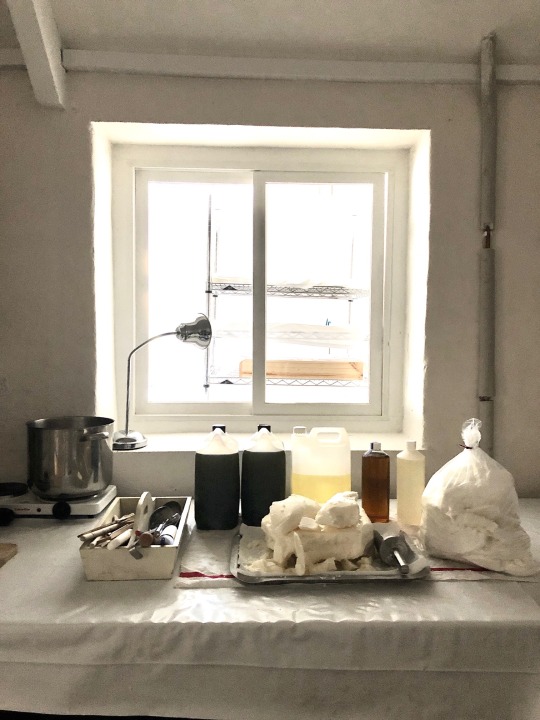
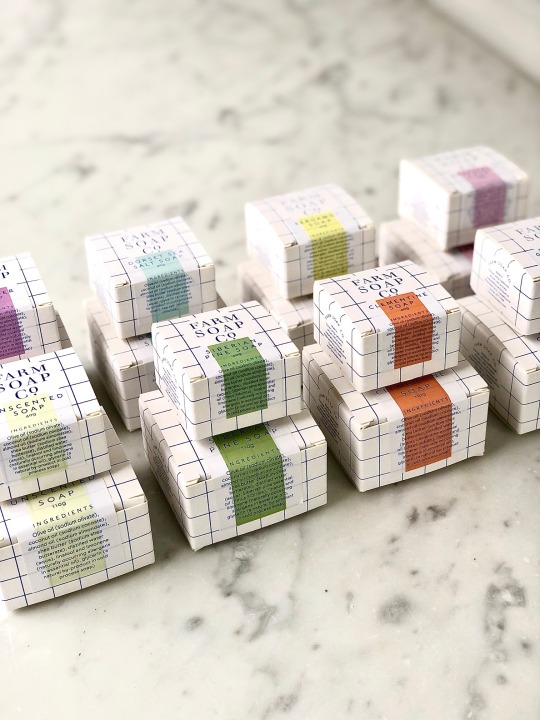


CREATIVE CONVERSATIONS
Who are you: Silvana de Soissons
What is your work: I am the founder and product maker at Farm Soap Co.
Where can we find you:
Website: www.farmsoapco.com
Twitter: @silvanades
Instagram: @farmsoapco
Facebook: Farm Soap Co.
Describe your work in 5 words: Handmade, small-batch, botanical skincare.
Can you tell us a little about what you do? I grow and produce botanical skincare products - I have just recently launched my business with eight different plant-based soaps, and will be launching bath salts, body oils, toners, mists and creams soon. I aim to grow the botanicals which are distilled and turned into the hydrosols, macerations and essential oils that go into the products. I am working on a section of the walled garden at Deans Court in Wimborne - hopefully we will be able to harvest the first plants in the autumn of this year.
Can you tell us about your career journey and how you got to where you are today? Well, I have certainly had a circuitous career, starting with a degree in Economics from the University of Bath and then moving to London. I have worked in finance, sales, marketing and retailing and have also owned my own food and lifestyle business in Bath. For a long time I have been a buyer of artisan toiletries and skincare products – both as a consumer and also as a retailer. I believe in the healing, nourishing and medicinal power of plants, and in putting the very best ingredients on my skin in the same way I would only put the best, seasonal, local ingredients on my plate. I wanted to create a skincare brand that was completely plant based, vegan, zero chemical and zero plastic, with trustworthy and transparent sourcing, and production with a sense of place. That’s how Farm Soap Co. was born.
Where is your office/studio, and what is the view out of your window? I am very fortunate, especially since the Coronavirus lock-down was announced, that my workshop is in the back of my home, so I have no commute. I live on a Dorset dairy farm and my workshop used to be a cheese room - the right temperature and size to create a soap making workshop. My view out of the window is the garden.
What is the first thing you do when you get to work? I come down to my kitchen at around 6.30am to let my Fox Terrier dog Gumdrop out. I then make coffee, listen to the news on BBC Radio 4, and then I make my ‘To Do’ list for the day - amount of soaps that need to be produced, check on the cured soaps, answer emails, send out samples to potential stockists, order new supplies etc.
What are the tools of your trade? There are so many! The soaps are made from olive oil, coconut oil, shea butter, almond oil, essential oils, lye and in some cases sea salt and seaweed from Dorset’s Jurassic coast. I use weighing scales, pouring jugs, bowls, spoons, knives, thermometers, pots, spatulas, moulds, trays, steel racks, the list goes on!
What can’t you work without? My Roberts radio – I have it on for most of the day, a bit of Radio 3, a bit of Radio 4. Always accompanied by Italian coffee or British tea, with a cheeky biscuit or two.
Why do you love what you do? I love working for myself; I love the artisan, handmade process; I love creating a product that is pure, natural and simple; I love growing and producing; I love not having to manage people (is it OK to say that?!).
Who or what inspires you? There are so many excellent independent, small-batch botanical skincare producers all over the world, and I am inspired and informed by them every day. It is fascinating to see how producers and formulators from many different countries use their culture, heritage, flora and customs to create skincare, toiletries and well-being products with a sense of place and pride. I love to follow the work of: Bamford, L.A Bruket, Sphaera Soap, Seed to Skin, Primally Pure, Rawbatch Soap, Pai Skincare, Votary, Vintner’s Daughter, Wild Sage, Wildsmith Skin, Wilder Botanics, A.S. Apothecary, Enchanted Plants, Yellow Gorse, Saint Iris Adriatica, Honest Skincare, Haeckels, so many!
What is the best advice you have received? This is a quote by Benjamin Franklin, so obviously it’s not advice received but it’s the advice I always give to those who want to be cheap, do sloppy work and cut corners: “The bitterness of poor quality remains long after the sweetness of low price is forgotten.” The best advice always comes from my husband John-Paul, and my 24 year old daughter Mariella. Whenever I have had problems dealing with certain people in my career, managing difficult members of staff, or handling a supplier who wasn’t behaving in a professional manner, I tell them the whole issue and they talk me through sensible solutions bit-by-bit. They really should set up an “Agony Aunt Advice” column, they’re so good at getting to the heart of the matter and nailing the solution on the head. Sometimes when the going gets tough in business (and when is the going not tough in business?!), you need to be strong and detach yourself from situations - you can’t see the solution clearly if you’re too close.
One moment in your career you will always remember? Err, launching Farm Soap Co. at the time of the Coronavirus epidemic has got to be right up there as memorable. I have never launched a lock-down business before – any helpful hints and tips?! Still, soap saves lives! We will always need soap, remember that.
What is the best part of your job? The best part of my job is working with fantastic botanical ingredients – coconut oil, shea butter, essential oils, herbs and flowers.
And the worst? The washing up! You would not believe the amount of washing up there is after you have made a batch of soap. Endless washing, drying, putting away and repeat!
What’s your proudest career achievement? Still being in the world of business and making and selling products thirty two years after graduating - I love making, creating, learning and developing and I think that it’s an achievement in life to never lose the gift of wonder, the thirst for knowledge and the drive to explore and invent. I am proud to be a dinosaur and still alive - that’s an achievement.
What are you working on at the moment? Formulations for botanical bath salts, body oils, toners, tonics and creams.
What single thing would improve the quality of your life? Please can someone find a vaccine for Coronavirus. Please could someone come and help me do the washing up. Also, please could someone come on a daily basis and tire Gumdrop out!
Can you share a favourite websites or Instagram feed? I love The Shopkeepers @the_shopkeepers https://www.theshopkeepers.com/ - they are such a wonderful resource for learning about and celebrating small, independent shops all over the world
I love The Botanical Candle Company in Shaftesbury - @thebotanicalcandleco https://www.thebotanicalcandleco.co.uk/ – such a beautiful shop selling wonderful homewares, lifestyle goods and the world’s best smelling scented candles made of soy wax. The owner Amalia Pothecary (what a wonderful name!) and her husband James, also have a lovely home and pets and her personal account @_apothecary_ is a hilarious peek at her life at home.
One of the most beautiful feeds on Instagram belongs to No 56 Penzance @no.56penzance and the artisan makers account @no.56makers https://no-56.com/ - I want to buy every single thing in that shop. The owner Carole has exquisite taste.
As does @thehambledon and @objectsofuse and @gonzalezygonzalezstore and @march.sf and @levestiairedejeanne and @rennes._ and @bontucson and @cinq.kyoko and @cloveandcreek and @avidaportuguesa and @veritecoeur_shop and @veritecoeur_atelier and @plaingoods and @tiinathestore...I could go on and on!
What have you learned the hard way? It takes a great deal of patience and commitment to formulate a good soap, or any skincare product. There are no shortcuts - you need to commit the time, resources, focus and energy. There are lots of failed attempts. You will end up using A LOT of soap yourself.
If you could do another job what would you like to do and why? I am a fair weather person - during the Summer I would like to work in a herb garden and look after plants all day long - being surrounded by nature, with a straw hat on my head, a Thermos flask of tea and a picnic lunch in my basket. Then in Winter you would find me in front of the fire - looking through all the seed catalogues and gardening books, planning the fair weather days.
What advice would you give to someone wanting to do what you are doing? You will need to learn a great deal, go on workshops and courses, follow all the professional makers, buy good books on the subject, practice, practice, practice, and develop your own distinctive products. The toiletries and skincare market is very crowded - you will need your own USP (unique selling proposition) and good branding and packaging too. I would say, go and work for others for a few years first and watch and learn all the sides of the business - from finance to sourcing, origination, production, sales, distribution etc. With every job comes an apprenticeship period that will stand you in good stead for the future.
If you could be someone for a day who would it be? I would like to be Jo Malone - she has such a wonderful sense of smell, ability to create new fragrances and market them in an extremely overcrowded market. She sold her eponymous business to Estée Lauder and then created Jo Loves. She has overcome huge personal adversity without losing her enthusiasm and smile - what a brilliant entrepreneur and positive, engaging role model to all who follow.
Do you have a secret ambition still to achieve? So many - I would love for Farm Soap Co. to grow as a business and be stocked in my favourite lifestyle stores and boutique hotels and B&Bs. My ambition is to keep learning and developing, producing really good botanical skincare products and toiletries for all my customers to enjoy.
What is your personal motto? Keep your head and hopes high.
If you had an extra hour each day what would you do with it? Enjoy a really long, hot bath with essential oils and bath salts, a glass of cold Prosecco in hand, woody, scented candles flickering, a warm, white fluffy towel on the radiator and clean flannel pyjamas. I am totally rock & roll!
How would you like to be remembered? She came. She saw. She made it happen. Then she had a bath.
Thank you Silvana for talking to The Lifestyle Editor.
4 notes
·
View notes
Photo










With environmental issues being at the forefront of our daily lives, being more aware of how we run our home, and what we put in it and use in our interiors, is more important than ever. Stylist and author Selina Lake has produced her latest book, NATURAL LIVING style, focusing on making our homes more sustainable and eco-friendly, as well as aesthetically pleasing and practical. “We can all do our bit for the planet and in turn benefit from a home that is as chemical and waste free as possible.”
Selina discusses her desire to live a greener life as well as ideas for each room in the house, such as natural materials to use, decorating and tips for reusing and upcycling, salvage solutions, garden ideas and how sustainability and style go hand-in-hand with beautiful photography by Rachel Whiting of inspiring and covetable interiors from around the globe. There is also a useful source guide at the back of the book, which hopefully will inspire the reader to lighten their footprint on the planet.
NATURAL LIVING style by Selina Lake, with photography by Rachel Whiting, is published by Ryland Peters & Small and available at bookstores and online here.
BOOK GIVEAWAY: With thanks to publishers Ryland, Peters & Small, I have one copy to giveaway (UK delivery only). Simply head over to Instagram to leave a reason why you would like this book in your collection. Good Luck!
12 notes
·
View notes
Photo

EDIT. a small sale curated by me...to inspire you.
I am selling a collection of vintage ceramics sourced from various potteries including Rye, Portmeirion, West Germany and Hornsea.
If you wish to purchase one of these pieces, then please direct message me on Instagram. Delivery is in the UK only.
Many thanks.
The Lifestyle Editor
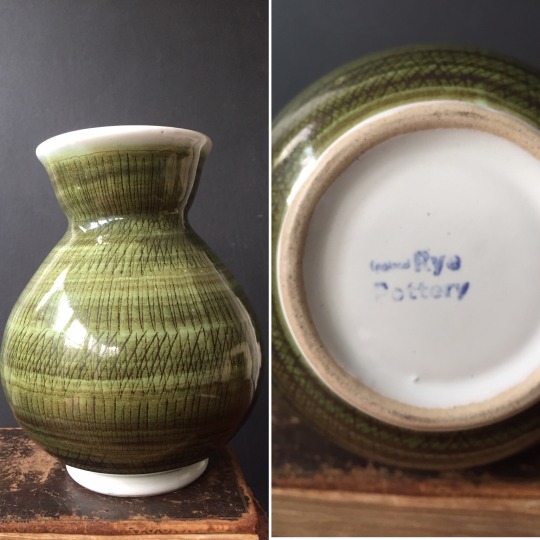
Vintage, earthenware vase with a white glaze and green sgraffito design, from Rye Pottery, East Sussex. Rye Pottery was originally established in the late 1700’s, Their mid-century range is very collectible and this piece is in very good condition - circa 1960s.
Price: £25 plus p&p
Dimensions: H16cm X D8cm (top rim)

Vintage, dark green earthenware jug, in the Totem design (1960s), by Susan Williams-Ellis for Portmeirion Pottery, made in Stoke on Trent. Susan Williams-Ellis was the daughter of Sir Clough Williams-Ellis, who created the Portmeirion village in North Wales. Totem was her most successful design collection, and combined a modern shape with patterns rooted in ancient cultures.
Price: £12.50 plus p&p
Dimensions: H10cm X D6cm

Small, vintage brown and green earthenware vinegar jug, in the Bronte design by John Clappison for Hornsea Pottery. Introduced in 1972, the Bronte range was discontinued by Hornsea Pottery many years before they ceased trading and has now become very difficult to obtain in good condition.
Price: £10
Dimensions: H9cm X D7cm (base rim)

Vintage, brown drip-glazed, earthenware windowsill flower vase (circa 60s/70s) from New Devon pottery, Newton Abbot, Devon. This piece is in wonderful condition for its age and would look charming on a dresser or windowsill.
Price: £20 plus p&p
Dimensions: H10cm X W24cm X D11cm

Vintage, caramel coloured drip-glazed, earthenware jug from Honiton Pottery, Devon. This would make a perfect custard jug and is in very good condition.
Price: £15 plus p&p
Dimensions: H12cm X D10cm

Vintage, brown and white mottle-glazed earthenware vase by Scheurich Keramik, Germany. Circa 60s/70s style, in very good condition and marked 203-18 W. Germany on the base.
Price: £25 plus p&p
Dimensions: H18.5cm X D10cm (at base)

Vintage, olive green earthenware storage jar (with lid), in the Totem design (1960s), by Susan Williams-Ellis for Portmeirion Pottery, made in Stoke on Trent. Susan Williams-Ellis was the daughter of Sir Clough Williams-Ellis, who created the Portmeirion village in North Wales. Totem was her most successful design collection, and combined a modern shape with patterns rooted in ancient cultures. Perfect to store pasta, rice and other dried goods.
Price: £25 plus p&p
H16cm X D13cm
8 notes
·
View notes
Photo
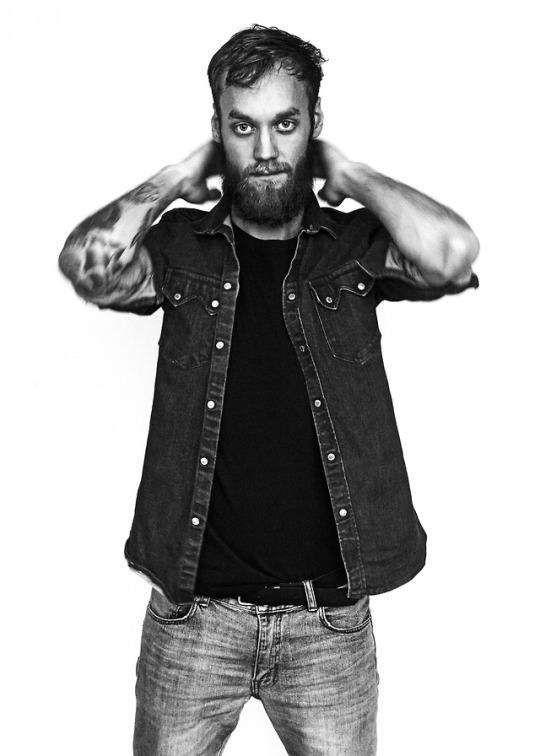
I HEART WORK
Who are you: Chris Tonnesen
What do you do: I’m a photographer.
Where can we find you? Website | Instagram
Describe your work in 5 words? Food, interiors, travel, sweat and tears!
Can you tell us a little about what you do? I work as a freelance photographer and work primarily with food and interior photography. I am based in Copenhagen and most of my clients are from here, but I also work with international clients.
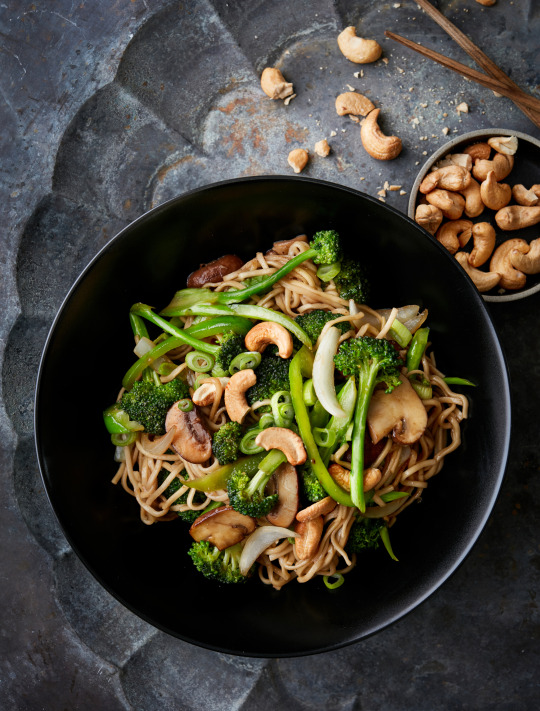
What took you on the road to being a photographer? It wasn’t a straight road - it took me a few years to figure out that photography was where I would find my passion. I recently looked at a 9th grade school paper on what I thought I would study and it said cookery. In high school, I always played around with my Mum's point-and-shoot camera, manipulating the images into obscurity in a hacked version of Photoshop. No one told me photography was something you could study, or in any way, was a desirable career path. So I went on to study in a business college - it lasted a year! That year I only kept my sanity because I bought my first DSLR camera and started photographing concerts on most weekends. At the end of my second semester, a friend of mine said she was moving to Copenhagen to study photography, and that was when it clicked – photography was something you could study, something you could do for a career! No one had ever told me that. So I quit college, packed my bags, and went to study it in Copenhagen. I ended up discovering that within photography there was a magical thing called food photography, this was my second click – I’ve not looked back since!
Where is your office/studio and what is the view out of your window? My studio is on the outskirts of Copenhagen, in the up-and-coming North West area – outside my window is an old factory-like backyard with a mix of mostly mechanics and a few small creative businesses.
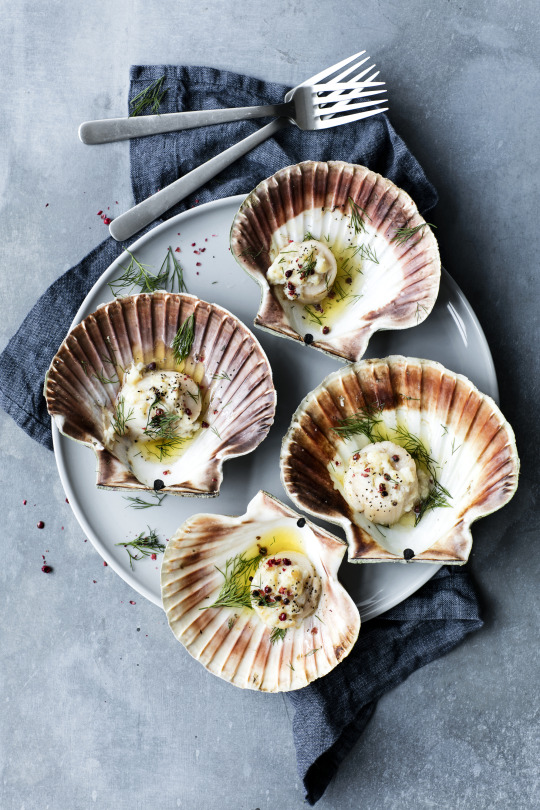
What is the first thing you do when you get to work/a shoot? The first thing I do when I get to the office is sit down and meditate for 20 minutes. Spending the time this way helps me sort out the day, my energy, and start off with a clear view. After that I drink coffee, black!
Describe a typical day at work? There is none, which is amazing! I do typically try and get home before 6pm so I can relax and recharge – work/life balance is very important to me. I normally either have clients coming to the studio for a day of photography, or I am going on location. Otherwise, it’s an office day were I edit images from shoots, sort through emails, drink loads of coffee and do all the other work required as a photographer.
What cameras do you like to use? I have always worked with Canon, and for the moment I use the 5DSR with an array of Canon and Sigma Primes. My favorite is the 85mm/1.2L from Canon, it’s a little fiddly and requires some room to manoeuvre – but I love the sharpness and how it pulls everything together nice and tight. For travel I have a Fuji X-T2 which is a little lighter and easier to carry around. You feel a little less intrusive with it because it’s smaller, which can be great when doing travel photography.
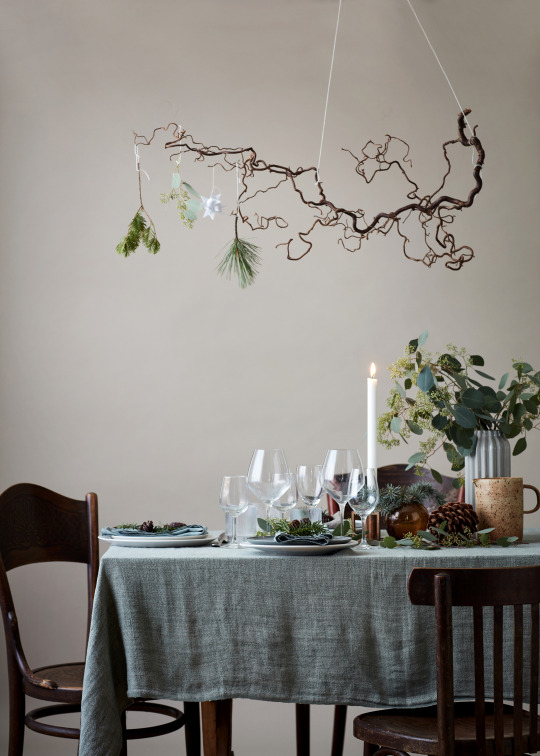
What can’t you work without? My huge Gitzo carbon tripod with a gear head. It’s heavy and big, and a pain to drag around – but there is no obstacle it can’t overcome or table it won’t fit over. It can become almost 3m high and I will love it until I die of a broken back!
Why do you love what you do? Mostly because I get to work with the things I love mostly – food and photography. But also because I get to meet so many inspiring people, whether it’s the incredible stylists I work with regularly, the chefs in kitchens who rock their world, or people who are in some way experts within their own craft. In these meetings an incredible synergy can arise, and it’s such an amazing way to work.
One shoot you won’t forget and why? A few years back I went to the Faroe Islands at the end of November to work with Restaurant Koks. It’s the most dramatic place I have ever visited, and the rough nature reflected instantly on the trip – from the highs to the lows! The sun rose at 9.30am and set at 3pm, so there really wasn’t any daylight to work with and that was hard on me because it was early in my career. But those lows were lifted by the amazing highs of the beautiful countryside, the amazing people, both locals and the staff at Koks, and how amazing the photos turned out. It really was a rite of passage and it’s a trip I will never forget.
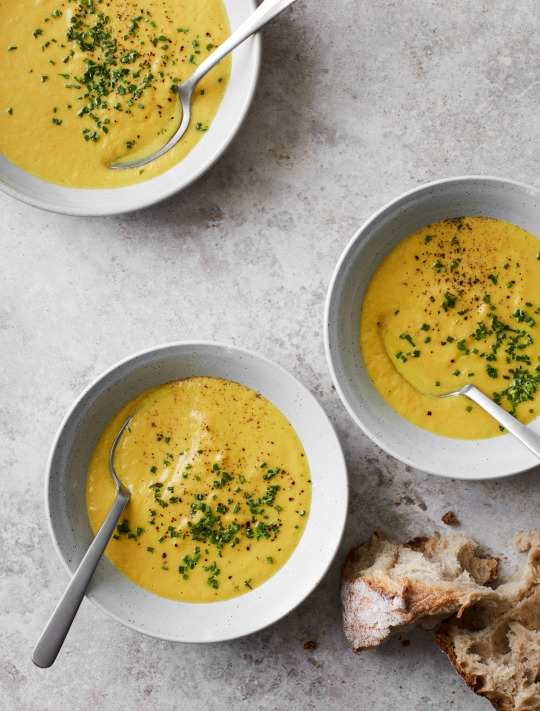
Who or what inspires you? At this very moment I am deeply inspired by the woods, all the brown and burned colours and tones. I can always find inspiration in nature and I try to connect with it as often as I can, whether by a stroll in a park or by diving into the cold oceans for spearfishing. But sometimes a direct inspiration can also force you to be inspired by the opposite. Mostly, natural light, soft shadows and toned down hues are my go-to, but sometimes I also get so tired of it that I just HAVE to do hard light and strong colours. Yin and yang I suppose!
What is the best advice you have received? It sounds stupid saying it’s the best advice, but my old master Line Klein always said, “Never discriminate the rich, if they want to pay you a lot, let them”! It can be hard to put a price on your own head, but it’s good to sometimes tell yourself that your work can be worth more than you think. Having a few well-paying gigs can free you up a bit to work on more fun and lesser-paid jobs.
One moment in your career you will always remember? The day I started as a freelancer and had to start from scratch, figure everything out and digging out that big green button that said GO. That moment where you realise this is it...that will probably stay with me for a long time.
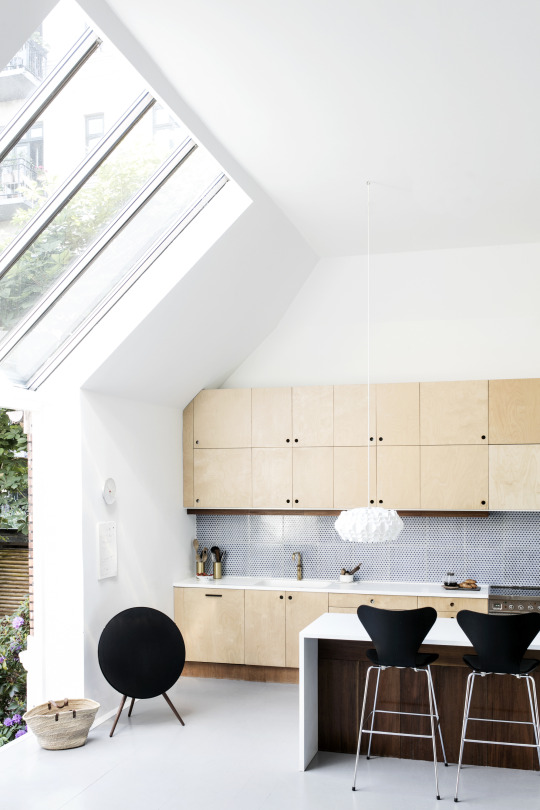
What is the best part of your job? Getting to eat amazing food and discuss it with the chef right there and then.
And the worst? Answering a load of emails forcing you to look at the screen all day.
What’s your proudest career achievement? The book project ‘On Eating Insects’ with Nordic Food Lab published on Phaidon. A book created with the most talented people and with an approach that is more than consumerism.
Which phrase do you overuse? “We’ll make it work, don’t worry!”

What single thing would improve the quality of your life? Probably an assistant or student to help with the workload. There is always more to do than you are aware of - I always feel just a bit behind.
What have you learned the hard way? Small tripod and big cameras don’t match – they will topple over at some point!
If you could do another job what would you like to do and why? Coming back to that 9th grade paper – I would work with food, no doubt anymore.

What advice would you give to someone wanting to be a photographer? Follow your passion whether it be food or fashion – and work at it hard. Find some people you can work with – my career kick-started by working with a restaurant pop-up group for free for two years.
Can you tell us about any other projects you have in the pipeline? I have just finished shooting a vegetarian cookbook that has turned out amazing, its called Flere Kødfri Dage (More Meatfree Days), and a book on baking with Meyers. I am also doing a big commercial shoot in Oslo with Northern alongside my most favourite and trusted stylist Per Olav Sølvberg. I also plan on doing a lot more with wildlife chef Adam Engel, more food in nature please!
Any favourite Instagram feeds you are enjoying at the moment? I’m trying to cut back on Instagram, so I will have to decline to answer. Alternatively, I’m really enjoying reading the Swedish magazine Fool.

If you could be someone for a day who would it be? I’d be Christopher McCandless (he was featured in the film Into The Wild), just before he over-reached his abilities in Alaska – I think he must have experienced freedom like few do.
How do you spend your downtime? I love hanging out with my girlfriend...she is amazing! Going into nature foraging and cooking. I practice free-diving twice a week to wind down and because it is the most amazing feeling going into the ocean with nothing but a big breath. And late at night I melt my brain with HBO or Netflix!
Can you give us a great tip on how to take better photographs? If you are new to it, then try using indirect natural light which is easy to use and allows you to focus on your composition and technique, instead of a complicated light setting. Read up on composition; rule of thirds, golden ratio, dynamics and suchlike.
What would you like to be doing in five years time? Working as a photographer still...what else?! Maybe living very close to the ocean and forests.
If you had an extra hour each day what would you do with it? I’d spend it with the people I love, the people who inspire me - getting fueled up on the stuff that isn’t work related.
What’s your personal motto? Photography isn’t life and death, we’ll make it work!
How would you like to be remembered? As a guy with a smile on my face, always.
Thank you Chris for talking to The Lifestyle Editor.

112 notes
·
View notes
Photo










If you’re looking for inspiration to transform your garden into something a little more special, then new book Garden Style might be just what your outdoor space needs. Stylist and author, Selina Lake, whose work can be seen in publications including Country Living, Homes & Antiques and Country Homes & Interiors, offers helpful advice, and inspiring and creative projects to transform what we have into whatever we want…be it an outdoor room for alfresco dining, converting a shed into a creative retreat or growing seasonal foliage and flowers to bring into our homes.
Selina begins her book by describing her sources of inspiration – famous gardens and garden centres, plant catalogues and botanical prints. Chapter Two, Decorating your Garden, is packed with suggestions for container gardening and introducing decorative features. In the next chapter, Bringing the Outside In, she harvests flowers and foliage from the garden to provide seasonal adornment for her home. Chapter Four, Garden Rooms, Greenhouses and Sheds, taps into the current trend for garden buildings that allow you to make the most of your outdoor space. In Relaxing Outdoors, Selina explains how to transform your garden into a stylish space for entertaining, with ideas on furniture, lighting and more. Finally, in Eating Outdoors, Selina offers advice on creating an inviting outdoor room for eating alfresco. With beautiful photography by Rachel Whiting, Selina inspires the reader to see their own outdoor area as a place to enjoy, relax, recharge and embrace their creativity. What are you waiting for...it’s time to get outside and transform even the smallest scrap of outdoor space into your new, lush green retreat with the help of Garden Style.
BOOK GIVEAWAY: With thanks to publishers Ryland Peters & Small, I have one copy to giveaway (UK delivery only). Simply head over to Instagram to leave a reason why you would like this book in your collection. Good Luck!
96 notes
·
View notes
Photo









“I love the sea. I love being by it, swimming in it and the way it makes me feel.” If author and creative director Sally Denning’s seaside sentiments resonate with how you feel towards being by the coast, then her new book Relaxed Coastal Style is a the latest must-have book for your collection. I have been following Sally’s beautiful and evocative Instagram gallery @blackshorestyle for sometime now, and falling in love with the tones, textures and monochromatic colour palette of corrugated shacks, weathered wood and coastal elements she beautifully captures. So it was no surprise to find that she had decided to capture her love for all things coastal, along with some stunning hideaway homes, in her debut book.
Working as a Stylist and Creative Director producing advertising campaigns for commercial and editorial clients, Sally brings a relaxed, easy living mood to her work, that is echoed throughout the book. The homes featured are located in seaside hot-spots such as St Mawes in Cornwall, Long Island in New York and Mallorca in the Spanish Ballearic Islands. The beautiful images, shot by Benjamin Edwards, make me wish I was sitting in the rustic wicker chair on the porch overlooking the sea, or sitting at the table in a dining room decorated with beach-combed flotsam and jetsam.
I decided to catch-up with Sally and talk more about her book and her love for seaside living.
Can you tell us a little about your book and who it might appeal to? It’s a much more laid back version of what you might imagine a coastal book to be, full of homes from around the world that have a relaxed vibe, ranging from a seaside shack in Norfolk, to a Cape Cod cedar-clad family home, on the East Coast of America. It’s not intended solely for those who are fortunate enough to have a home by the sea, as it shows how to take inspiration from the beauty of the coast and bring those ideas indoors, wherever you live.
What is it that you love about the style of coastal living? The ocean is synonymous with restoration and revitalisation, so I love the idea of transferring that feeling into your home. I adore the palettes and textures that the coast creates, and I’m a real texture fiend, so anything weathered, battered, rustic or with a beautiful patina, I’m generally drawn to. The natural colours of the ocean, weathered wood, bare floorboards, sun-bleached fabrics and robust linens, are my go-to staples to create a home that feels relaxed and welcoming.
The houses featured in the book are stunning...if you could live in one which would it be, and why? The Cape Cod vintage cottage because I love the fact that the owner hasn’t made it too ‘seasidey’ inside, instead opting for stylish nods to the sea rather than gimmicky elements. The history of the property is wonderful too, and the bare floorboards, wooden walls and internal structure are a delight. The yellow kitchen was definitely one of my favourite rooms to shoot, and the main bedroom is dreamy; rich in texture and charm.
Can you suggest three key elements to bringing inspiration from the coast into an urban home? Weathered or worn wood, robust loose-weave linens and calming coastal paint colours. Or just texture, texture, texture!
Any top tips for sourcing seaside style elements if decorating on a tight budget? Beach-combing costs nothing! Stroll along any beach first thing in the morning, or at low tide, and you may happen upon something beautifully weathered and worn that’s been washed up that would look gorgeous on display. Drift wood is an obvious choice, and once dried out, can look beautiful on a shelf or table. Chandlers shops are good places to pick up good value items such as ropes and other nauticalia. Framed old maps are beautiful too and cost very little.
Do you have a favourite stretch of coastline in the UK? I love Cornwall of course, but I do think there is a real magic to the Suffolk coast where we spend a lot of time as a family.
Do you currently live by the sea? Is so, where? If not, why? We don’t live by the sea sadly, but we do spend a lot of time near it! One day I would love to live on the coast, it’s definitely my favourite place to be.
Your Instagram feed is a series of beautiful 'postcards' displaying your love of tones and textures. Where or what inspires you on a daily basis? I am lucky enough to have my dream job as an Interiors Stylist, so I get press releases every day showing me the latest and newest fabrics, trends and products, and I also go to the design and trade shows. I must admit I do love Pinterest and Instagram as they are always good sources for inspiration. I love travelling - not that we’ve done so much these days with a young family - but any chance I have, I would happily wander round the streets of an old Mediterranean town with nothing but a camera!
What are you working on now? I’m working on a big shoot for a fabric client next week, then I’m taking a few weeks off for the summer holidays. In the Autumn I’ve got some big projects coming up, mixed in with some editorial shoots, then who knows...the joy of being freelance, is that you never quite know what will happen next!
And finally...how did you juggle being a busy Creative Director on shoots for clients, alongside writing a book and being a busy Mum?! I can’t pretend for a moment that it’s easy (it’s not!), but I have an amazingly patient and understanding husband. We juggle everything together and we plan ahead with military precision, and I keep everything crossed that nothing will go wrong. The work bit is easy in comparison!!
BOOK GIVEAWAY: With thanks to publishers Ryland Peters & Small, I have a copy of Relaxed Coastal Style to giveaway (UK delivery only). Head over to Instagram and leave a comment why you would like to receive this book. Good luck!
73 notes
·
View notes
Photo










I HEART WORK
Who are you? Alun Callender
What is your work? I’m a photographer and filmmaker.
Where can we find you? Website | Twitter | Instagram | Facebook
Describe your work in 5 words? People, portraits, passion, art, craft.
Can you tell us a little about what you do? I’m a photographer who is endlessly fascinated about the creative process. I like photographing people who are on that fine line between being as creative as possible, and making a living. For me, it’s always an interesting place to be creatively, it gives you parameters to push against and challenge yourself.
What took you on the road to being a photographer? When I was sixteen I knew I wanted to be a photographer, something just clicked and that’s all I’ve ever wanted to do since. I loved the mix of art and science, especially in those early days of being in the darkroom, processing film and making prints, creating actual things and inventing an alternative world. Also the history of photography greatly impressed me, the work of Julia Margaret Cameron, Paul Strand, Edward Weston, Bill Brandt, Richard Avedon and Irving Penn, made me realise the power and inspiration that photography can create.
Where is your office/studio and what is the view out of your window? I have an office at a place called Rodhus in Brighton, it’s an old lighting factory. I have two desks one for digital, computer stuff and the other for ‘analogue’ (I hate that word!) stuff. There are lots of makers and interesting people around so there’s always opportunities to be able to collaborate.
What is the first thing you do when you get to work? Put the kettle on then forget about it, turn the computer on then look through the ever growing pile of magazines and books that seem to appear for inspiration.
Describe a typical day at work? In the office I always get distracted and constantly keep missing my lunch, there’s always so much to catch-up on. When I’m making images it’s always on location, so I liked to be focused and organised, but everyday is different which I love, in a different place and with different people.
What cameras do you like to use? I’ve been dreaming about getting my old film cameras out again, but I have a selection of Canon 5D bodies. It’s so great that film and traditional processes are having a revival and using film is the best way to learn the craft of photography. I decided that I wanted the look of my personal and commissioned work to blend seamlessly into each other so am still embracing a full digital workflow. Besides which, I used film for 20 years and it is a bit of a pain in the backside with all that scanning nowadays!
What can’t you work without? My car. I have a sensible, large estate car that is packed with all the kit I need, clothing, boots, sandbags and healthy emergency snacks!
Why do you love what you do? I love photography and it’s process, but I also love meeting people and telling their stories, it’s endlessly fascinating, my passion for photography has never really decreased, in fact it’s intensified over the years. There are always challenges to over come, so I still feel like I’m starting out.
One shoot you won’t forget and why? That’s a tough one...probably photographing Darcy Bussell a few years back when she was still dancing at the Royal Opera House. It was so amazing to see her fly around the rehearsal space, I was buzzing for weeks afterwards!
Who or what inspires you? I love magazines, especially fashion titles, and I’m passionate about nature and the natural world. I love sculpture and continue to be inspired by the work of Irving Penn, Richard Avedon and Annie Leibovitz.
What is the best advice you have received? Follow your own path and don’t be distracted by others.
What is the best part of your job? Being able to meet so many interesting people, I live in my bubble and it’s wonderful to visit people and spend time in their bubbles.
And the worst? It’s very rare that it ever feels like work, and when it does that’s tough! Although the rejection can sometimes be depressing, so you have to develop a thick skin!
What’s your proudest career achievement? Still making a living after fifteen years of being a working photographer! It’s always a challenge, and it’s never easy, but it’s a profession I love being part of.
Which phrase do you overuse? “Look to me, look away.”
What single thing would improve the quality of your life? A boat, and time to sail it.
What have you learned the hard way? It’s a tough business and you can’t rest on your laurels, you just have to be on it.
If you could do another job what would you like to do and why? I’d have a small holding and grow vegetables.
What advice would you give to someone wanting to be a photographer? If you really want it, don’t ever give up.
Can you tell us about any projects you have in the pipeline? I’m working on a portrait project titled ‘The Modern British Maker’, something I’m very interested in, as well as returning to photograph dancers and performance artists.
How do you spend your downtime? With my family and dreaming of long walks.
Can you give us a great tip on how to take better photographs? It’s all about putting a frame around something, and thinking about what you are going to leave out.
What would you like to be doing in five years time? Still making a living being a photographer, I’d really like to start making books on themes I’m passionate about, such as makers, artists and craftspeople.
If you had an extra hour each day what would you do with it? Go for a walk.
What’s your personal motto? “It’s best not to panic!”
How would you like to be remembered? I took photographs, I drunk tea and moved furniture about!
All images © Alun Callender.
Portrait of Alun © Andrew Sanderson
Thank you Alun for talking to The Lifestyle Editor.
81 notes
·
View notes
Photo










Nestled in the picturesque Wiltshire countryside, The Craftsman’s Cottage is a unique holiday home developed and curated by Amanda Bannister. Borne out of love for artisan wares and British craft, and having hosted friends and family for many years, Amanda decided to take a leap of faith and purchase the house next door, with a view to developing her dream into a reality. I recently caught up with her to find out more about this charming and beautifully designed rural retreat, and learn more about her love for British crafts.
Can you tell us a little about yourself? I studied law at Exeter and am a media lawyer advising on business affairs for clients in the entertainment industry, digital media, talent endorsement and branded content. I am married with three children and we live in West London during the week, spending weekends and school holidays at our converted Baptist church in Semley, Wiltshire, next to The Craftsman’s Cottage. We bought the church 16 years ago and have added a creative workspace in the garden, built by Studio Hardie, where I get the chance to be a maker and indulge my love for pottery. My husband is also a lawyer and he loves to be creative too in his spare time, restoring antiques and exploring block-printing techniques.
How old is the cottage and was it in need of renovation? The cottage was built in the 1820′s and looking back at the original documentation, it was possibly the minister’s house for the church we now live in. It came on the market about seven or eight years ago and was in need of total renovation, but we didn’t buy it at that point. It then came back on the market and we bought it in March 2016 and fortunately a lot of the major renovations to it had been undertaken, with a lovely stone floor being installed and under-floor heating. We did have to have some remedial works done to the roof, but fortunately we could concentrate more on the decoration and minor remodeling works. We converted the garage into a self-contained annex with its own kitchen and bathroom which can sleep two extra guests. We were really lucky to have it all completed in six months, though a lot of my time was spent sourcing the furniture, furnishings and accessories from British based companies we wanted to showcase.
You seem to have a love for, and champion British craft, why is that? I have always been passionate about craft and had an insatiable desire to make as a child…and yes I was a Blue Peter addict! I hoarded toilet rolls, fabric remnants and everything I could get my hands on to make and create. Even when I was starting out as a lawyer, I would make velvet scarves to sell to the partners’ wives and design mosaic tables to sell also - I was renowned for constantly starting a new creative hobby!
Craft is now very much revered and rightly so, we have so much skill and talent in our country that needs to be celebrated. We don’t place enough importance on art, craft and technical skills in our education system, which is incredibly sad for us as to where we are headed as a nation. Making with our hands has also been shown to be hugely beneficial to our mental health, and a great therapy in this increasingly digitally driven world we now live in. I think people want to touch, smell and work with something in their hands, it feels as if we are undergoing a sort of post-digital revolution. The whole process of supporting British businesses also imposed a design discipline to the decoration of the cottage, which I have very much enjoyed.
What gave you the inspiration to combine your love of craft with running a holiday home? I knew that I didn’t want to do just a holiday rental and wanted to combine it somehow with sharing my love for British based artisans. I wanted to support and nurture makers and their businesses and felt the cottage could be a rural retreat with a retail layer to it. I also didn’t want our guests to feel as if they are having a sleepover in a shop…we don’t have price tags on everything! Ultimately, we want them to be enjoying the cottage and the surrounding areas, and if they happen to fall in love with the cutlery they use, or the bench they sit on in the hallway, then we have an iPad at the house and our guests can see where the furniture and accessories are from. They can then order direct from the maker or I can facilitate it for them, and they receive 10% off of their purchases.
Can you tell us some of the companies you have sourced to furnish the cottage? The cottage is filled with a mix of antique, mid-century modern and contemporary pieces, which I have curated to work in harmony together. The kitchen in the house was designed by deVOL and for the one in the annex we chose the Sebastian Cox design, also by deVOL. A lot of the furniture is from Pinch and Another Country, and the printed cushions and lampshades are by Bonfield Block-Printers. We have lighting by Anglepoise and Original BTC, and cutlery by David Mellor. In the kitchen there is a lovely corner seating unit that was made by a local cabinet maker, Wardour Workshps from nearby Oak trees. The armchairs are upholstered in fabrics from textile designer Susan Deliss and I have used wallpapers from GP & J Baker along with William Morris designs in the bedrooms. We are also looking to work in collaboration with businesses to curate our own ‘The Craftsman’s Cottage’ collection and have recently been meeting with Guillotine England to design gilets, using Yorkshire wool and Liberty print linings for our guests to enjoy and buy.
What can I expect from a stay at The Craftsman’s Cottage? I want our guests at the cottage to feel as if they are staying at a friend’s house with great taste, who have let them use it whilst they are away, and where nothing is too much trouble. We leave our guests a welcome hamper, which includes homemade granola, local jams, milk from the dairy down the road, Scottish shortbread, Welsh cheese, local cider and eggs, and a home baked banana or lemon drizzle cake. There is a local shop close by where they sell freshly baked bread and croissants on a Saturday morning, and if arriving late we offer a Craftsman’s Cottage supper for £20 per head so there is no worry of trying to find a nearby place to eat. We are based in a beautiful part of Wiltshire and would appeal to anyone looking for a rural holiday with an injection of cool! Nearby in Tisbury, for art lovers, is the gallery and arts centre Messums Wiltshire, with the Hauser & Worth gallery about 20 minutes away. Wardour Castle and Stourhead are well worth visiting, and we are blessed to have a fantastic pub in Tisbury, The Beckford Arms, if you simply want to enjoy local walks and great food.
What future plans do you have for this unique holiday business? I am looking to have creative courses such as book binding and pottery at the cottage so it can be a place to come, stay and gain new skills. I think people enjoy creative experiences where they can learn and share with other like-minded individuals, indulge in creativity and escape this digital age we live in, albeit for a short time. I am also hoping to develop the retail side of the cottage and some possible ideas include a pop-up shop somewhere to showcase our makers, as well as develop our own exclusive products with them for an online market place.
The Craftsman’s Cottage is available for a minimum of three nights stay. For further details email: [email protected]. Follow The Craftsman’s Cottage here: Website | Instagram
Images © Roy Riley
63 notes
·
View notes
Photo

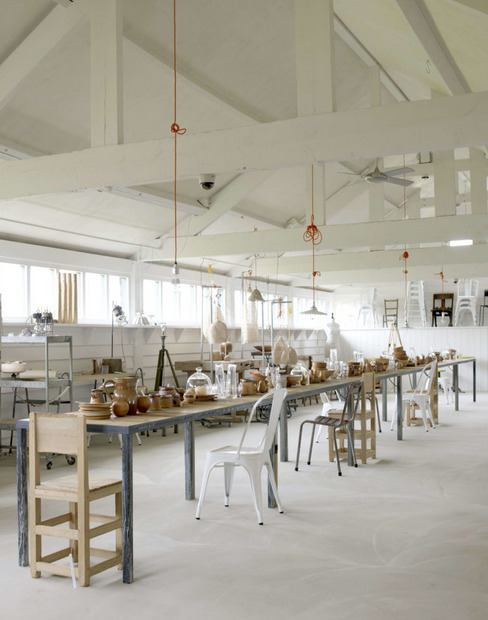




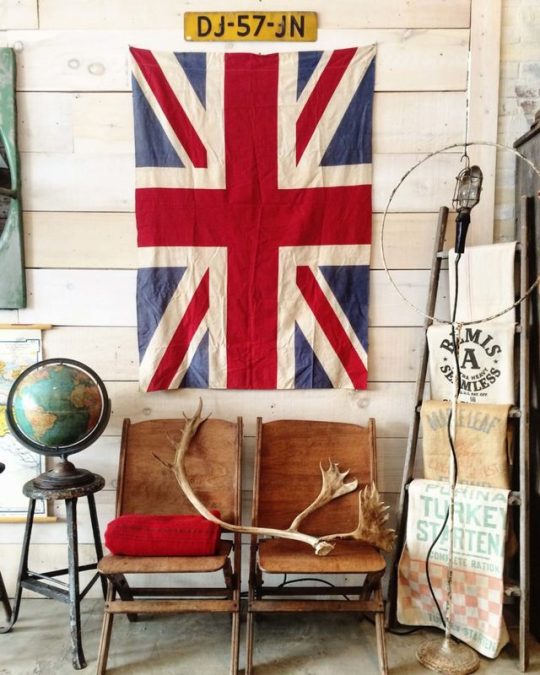



I HEART WORK
Who are you: Paula Flynn
What is your work: Editor of The Shopkeepers
Where can we find you: Website | Twitter | Instagram | Facebook
Describe your work in 5 words: Sharing A World of Shops!
Can you tell us a little about your what you do? I share photos, stories and insights into a community of inspiring shops and shopkeepers. I love to help promote and profile shopkeepers that keep this vibrant tradition relevant in today’s fast evolving world.
Why did you want to start The Shopkeepers? I have a curiosity about the changing world of retail. In the past decade we shop more and more online and there seems to be more products and choices available to us. I was curious about the impact our changing shopping habits would have on bricks and mortar shops. There are many shopkeepers that have created unique experiences for those who still enjoy the tactile and sensory pleasures of visiting beautiful stores. These are the shops I find interesting and like to showcase.
Can you tell us about your career journey and how you got to where you are today? I am a printed textile/fashion graduate from the National College of Art and Design in Dublin. I’ve worked as a designer and consultant in both New York and Paris, and some of the brands I have worked for include; Gap, Orla Kiely, Liz Claiborne, Karl Lagerfeld and Chloe. Over the course of my career, I have had experience in all aspects of the retail trade, so have a good understanding of what is involved in creating a successful venture. During the 1990’s, I was very fortunate to have travelled throughout Europe and Asia, including London, Paris and Tokyo, researching shops and trends. It was an amazing experience! I wish I had had an iPhone back then!
I have always appreciated a well-designed, cohesive collection, whether that be a small group of items or a whole store with a compelling point of view. I have a great admiration for designers and retailers that are able to build their concept into a successful business. A few years ago, just after completing a freelance project, I had the idea to start a blog focused solely on shops, as I felt it had not been done by anyone before.
Where is your office/studio and what is the view out of your window? I don’t have a specific office or studio as I am on the move a lot, so that was a big part of the appeal of this project. I can work anywhere! I am based in New York City and from my apartment there my view is a constantly moving tableau of the East River from the 35th floor.
What is the first thing you do when you get to work? Drink coffee and check my emails.
What are the tools of your trade? My Mac Book, Sony camera, iPhone 7+, and a collection of notebooks.
What can’t you work without? All of the above!
Why do you love what you do? I love exploring and the enchantment that comes with the discovery of a new shop or place.
What are your three favourite shops and why? There are way too many I love for various reasons. Biba, Rainbow’s End, and Liberty London are three shops that had a great impact on me, two of which sadly no longer exist. I was lucky to visit the amazing Biba on Kensington High Street, and was completely blown away by it’s originality and merchandising, and probably launched my ‘shop’ fascination. I worked throughout my art college days at Rainbow’s End in Dublin and learned that I had an affinity for retail. As a printed textile student I have always been fascinated by Liberty, and find it an amazing brand with their signature textiles and iconic building.
Who or what inspires you? People that create their own paths in life.
What is the best advice you have received? After graduating college I was so excited to have an interview with Liberty of London. I don’t remember the name of the person I met - but I do remember her advice. She said it wasn’t easy to start a career in design and to persevere, as the biggest hurdle was getting that first job, and that in her experience as many as 50% of candidates gave up and never worked in the field they trained for.
One moment in your career you will always remember? There are several – though getting my first job in a design studio in New York was really exciting.
What is the best part of your job? Being outside, and not stuck behind a desk. I love meeting people and learning new skills all the time.
And the worst? Not having enough time to do everything I would like to.
What are you working on at the moment for The Shopkeepers? Working on publishing more of our ‘Going Places’ guides as possible. The guides are a lovely way to include multiple destinations within one area and have proved popular with our readers.
What single thing would improve the quality of your life? Help with social media – it’s so time consuming!
Can you share any of your favourite websites or Instagram feeds? Instagram: At the moment I am enjoying the creativity of All That Is She, The Slow Traveler and Humphrey & Grace. There are many beautiful floral and styling feeds like Nonihana and Local Milk, and travel feeds like Tiny Atlas Quarterly and Culture Trip that are very inspiring. I love the random nature of scrolling and searching through Instagram and discovering great images and accounts.
Websites: Remodelista and Gardenista are great resources, and they just launched a new site, The Organized Home.
What have you learned the hard way? My way around a computer - sadly it didn’t come naturally.
If you could do another job what would you like to do and why? I would love to be a documentary filmmaker. Since getting behind a lens, I have become intrigued with the film making process and there are so many worthy stories waiting to be told.
What advice would you give to someone wanting to do what you are doing? Blogging consumes a huge amount of time! It’s not just creating content, there is so much involved in social media as well, so if you are going to blog, be sure it’s something you’re passionate about.
If you could be someone for a day who would it be? Annie Leibovitz. I am so much more comfortable taking photographs of inanimate objects. I would love to learn what I could, even in one day, from a master of portrait photography.
Do you have a secret ambition still to achieve? Playing the piano and running a marathon.
What is your personal motto? Life is too short not to do the unexpected sometimes.
What would you like to be doing in five years time? Hopefully The Shopkeepers will have continued to have evolved, so as well as what I’m doing now, I will be able to be involved in other new projects, and continue to travel to new destinations to discover more shops.
If you had an extra hour each day what would you do with it? Yoga and reading.
How would you like to be remembered? Kindly.
Thank you Paula for talking to The Lifestyle Editor.
IMAGE CREDITS:
1. Paula Flynn © Louisa Wells 2. Baileys Home 3. Regular Visitors 4. Fog Linen Work 5. White Flower Farmhouse 6. Wild Sussex 7. Douglas + Son 8. The Society Inc. 9. Merci 10. Secret Maison
17 notes
·
View notes
Photo










It’s the season to be lighting a fire, as evenings draw in earlier with each day and Winter is knocking at the door. Whether you have a traditional open hearth, a contemporary style woodburner, or enjoy making campfires on family holidays, new title, The Little Book of Building Fires is a resourceful and informative joy to read. In this fast-moving digital world we now live in, lighting and sitting in front of a fire is a perfect way to slow down, a way to press the pause button and take a moment to be mindful. Lifestyle author Sally Coulthard’s book covers everything you need to know about fire lighting - including topics such as which trees burn best, choosing kindling and tinder, sourcing, storing and seasoning wood, even how to make your own scented firelighters. Sally has divided the book into various chapters such as The Anatomy of Fire, Finding Firewood, Building a Fire and The Fragrant Fire, with each one beautifully illustrated with black and white linocut images by print maker Elizabeth Newsham. I predict this charming and practical guide will be gift-wrapped and under the tree in many homes this Christmas!
The Little Book of Building Fires by Sally Coulthard, published by Anima (imprint of Head of Zeus), and available to buy online here. BOOK GIVEAWAY: With thanks to Sally Coulthard, I have one copy to giveway to a lucky reader. Head over to Instagram and leave a comment why you would like to win. Good luck!
12 notes
·
View notes
Photo










I have always preferred cookbooks that have a story running through them - the pages packed full of achievable and delicious recipes, alongside lifestyle images evocative of the book’s narrative. Guiding the reader through seasonal home cooking and sharing an insight into the cook’s own lifestyle, their love of delicious food, and how they entertain family and friends. Athena Calderone’s new book Cook Beautiful delivers all of this and some, with beautiful images shot by photographer Johnny Miller of 100 seasonal recipes, with step-by-step advice on everything from prep to presentation. Described by New York Times T Magazine as “The modern girl’s Martha Stewart”, Athena has worn many hats in her career so far, such as model, interior designer, food blogger, chef and entertaining expert. Her debut cookbook follows in the tradition of her popular blog, EyeSwoon, where design meets food, culinary tradition marries food styling, and home chefs become experts. Divided into the four seasons, the book covers such delights as Earl Grey Chocolate Soufflé Cake, Pan-seared Bass over Black Lentils with Parsley-Lime Sauce, Summer Squash Salad with Arugula and Feta and Ginger And Vanilla Bean Rhubarb Galette. Each section concludes with a tablescape moodboard, inspired by nature’s seasonal bounty and style ideas. Athena’s love of building robust flavours with minimal, basic ingredients and a little know-how is my kind of cooking, and Cook Beautiful is the perfect book to dip into for inspiration in the kitchen throughout the seasons.
Cook Beautiful by Athena Calderone, photography by Johnny Miller, published by Abrams, £25, is available online here. BOOK GIVEAWAY: With thanks to publishers Abrams, I have one copy to giveaway (Europe delivery only), simply head to Instagram and leave a comment why you would love to win this book. Good luck!
Follow Athena Calderone here: Blog | Instagram | Twitter
19 notes
·
View notes
Photo










Today, more than ever, we are embracing the importance of living a more sustainable lifestyle, respecting our environment and realising the importance of living in harmony with nature. Traditional crafts are not only being revisited, but celebrated and enjoyed, due to the creative and emotional well-being they bring us. Textile artist Abigail Booth, has carved out her niche in the world of natural dyes, and launched her first book, Wild Dyer, to share her skills and experience. One half of the East London based partnership Forest + Found, (her partner Max Bainbridge hand-carves spoons, bowls and boards), Abigail demystifies the art of natural dyeing, focusing on how to find your dyeing materials, and then using the finished fabrics to create a collection of patchwork and stitch projects. Abigail trained as an artist at Chelsea College of Art and Design and has always had a passion for textiles and colour and their influence on culture in both a contemporary and historical context. “Colour is a perception and, as such, is sensitive to each of us individually.”
Abigail uses a range of plants such as onions, avocados, red cabbage, nettles, blackberries and even everyday kitchen waste such as tea leaves and coffee grounds to infuse colour into her fabrics, which she then uses to create hand-made patchwork blankets, cushions, bags and aprons. “My own textile practice is predominantly focused on the making of large-scale wall hangings and quilts. I wanted to write a book that would focus on the production of smaller textile pieces that can be used every day and become part of your daily ritual.” With beautiful photography by Dean Hearne, this book will inspire you and inform you in equal measures, and Abigail’s passion to craft and create textiles will have us all collecting our vegetable peelings to try our hand at natural dying.
Wild Dyer by Abigail Booth, published by Kyle Books, with photography by Dean Hearne, is available to buy online here. BOOK GIVEAWAY: With thanks to Kyle Books, I have a copy of Wild Dyer to giveaway over on Instagram so head there to leave your comment if you would like to win a copy (UK delivery only). Good luck!
18 notes
·
View notes